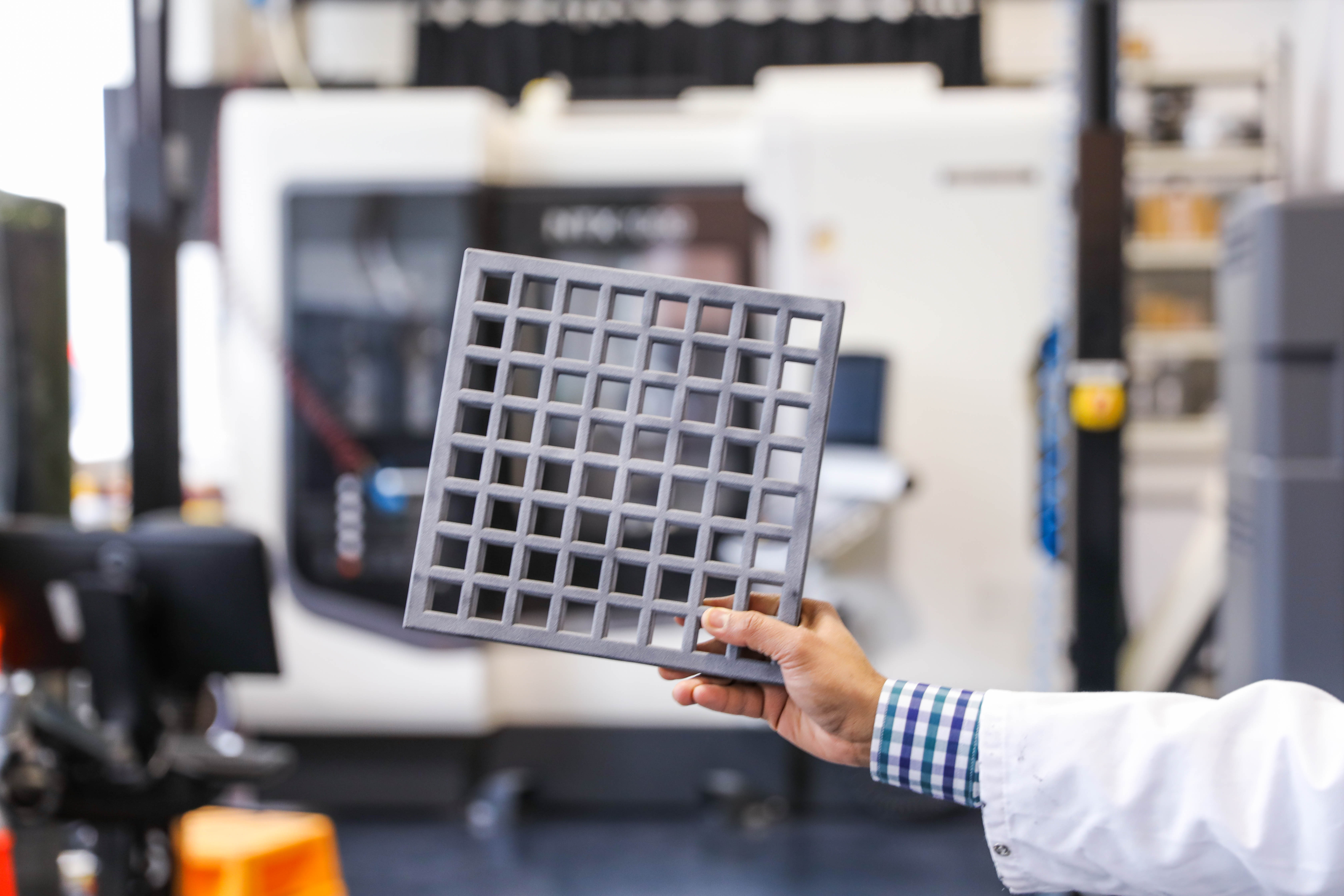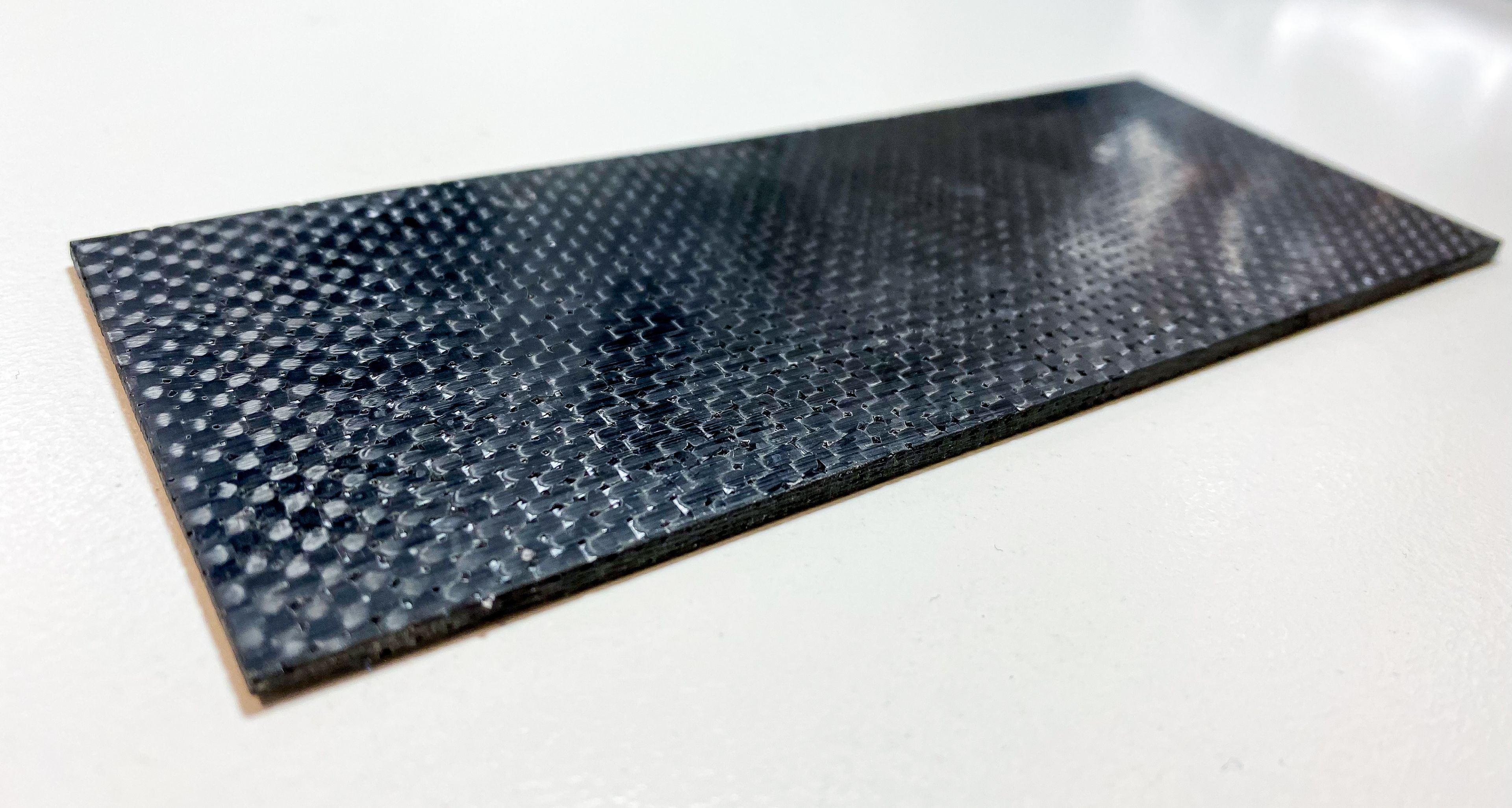Next gen materials take flight with Swinburne research

Smart carbon fibre composite structures are designed to detect potential failure and assess maintenance needs in real-time.
In summary
- An industry-linked project with Sparc Technologies is creating graphene-enabled smart composites for aviation, aerospace and renewable energy
- These smart structures can be wirelessly monitored for hard-to-detect defects using a smart device, helping prevent catastrophic failures
- The project was funded by an ARC Linkage Grant from the Federal Government, with over $1 million invested across Swinburne, the Government and industry partners.
New industry-linked Swinburne research could save lives and save millions by using nanomaterials to help engineers detect structural defects in planes and rockets before they cause disaster.
The ARC Linkage funded project with Sparc Technologies and Composite Materials Engineering is creating the next generation of smart composites that can improve safety and reliability, while significantly reducing costs in the energy, transport and aerospace sectors.
These smart carbon fibre structures are designed to detect potential failure and assess maintenance needs in real-time, wirelessly using a smart device. We could be seeing this technology in commercial airplanes and wind turbines within the decade.
Deputy Vice-Chancellor Research, Professor Karen Hapgood, said the project was utilising Swinburne’s world-leading capabilities and expertise in space, aerospace and advanced manufacturing to make a real-world impact.
“Smart composites, such as those being created by this project, represent the connected future of our cities, our structures and our networks.”
“We are delighted to be working with our partners at Sparc Technologies to be turning this research into a reality that can drastically improve safety and reduce costs.”

An example of the next gen composite materials being created by Swinburne researchers
Managing Director of Sparc Technologies Mike Bartels said the project was an example of the innovative solutions that could be realised through university and industry collaboration.
“Working with Swinburne University of Technology, we are pushing the boundaries of what is capable in advanced manufacturing and graphene-based technologies to truly transform industries.”
Making our structures smart
Carbon fibre composites are an essential part of modern infrastructure but the physical and environmental forces they experience often cause defects that cannot be detected by visual inspection.
This project aims to use graphene-based nanomaterials to create a working prototype of a smart structure with wireless connectivity that can be remotely monitored for these difficult-to-identify defects.
This includes allowing technicians to monitor wind-turbine blades in remote mountain or coastal locations and detecting faults in airplane and rocket parts before they fail.
Lead investigator Associate Professor Nishar Hameed said the project would have important implications for safety, reliability and cost in space, aerospace and renewable energy.
“We are helping to create an interconnected network of smart composites that can transform how we build and maintain massive structures like airplanes and wind turbines,” he said.
“This technology could help address the massive cost – human, economic, environmental – of catastrophic disasters like airplane crashes, while delivering benefits across a range of industries.”
-
Media Enquiries
Related articles
-

- Trades
- University
- Sustainability
Transforming Indigenous housing with future-forward solutions
Swinburne University of Technology has launched a new Indigenous Building Co-Fab initiative. The initiative will tackle housing affordability and sustainability by creating innovative pathways to upskilling communities themselves.
Tuesday 19 December 2023 -

- Engineering
- Health
Do I have the right bicycle helmet and how can I tell if it’s any good? A bike helmet researcher explains
If you ride a bike and want to cut your risk of traumatic head injury, you should wear a helmet. A major Australian review of 40 different studies and 64,000 injured cyclists worldwide showed wearing a bicycle helmet reduces the risk of serious head injury by nearly 70%.
Monday 07 August 2023 -

- Engineering
- Sustainability
Batteries are the environmental Achilles heel of electric vehicles – unless we repair, reuse and recycle them
Electric vehicle advocates say the cars ultimately have a smaller carbon footprint than their fossil-fuelled counterparts and could resolve our energy concerns for good. Well, fair enough, but questions arise when we dig into the inner layers of electrical vehicles and see how sustainable their components are.
Thursday 25 May 2023 -

- Technology
- Aviation
- Engineering
Swinburne on show at Avalon
Swinburne’s capabilities in astrophysics, aerospace, aviation, engineering, advanced manufacturing and artificial intelligence were on display at the 2023 Avalon International Airshow.
Monday 06 March 2023 -

- Engineering
- University
Constructing futures with France: Swinburne’s international engineering collaboration
Swinburne’s new partnership with École Spéciale des Travaux Publics, and Bouygues Construction Australia will establish education and industry links between Australia and France.
Thursday 23 March 2023

